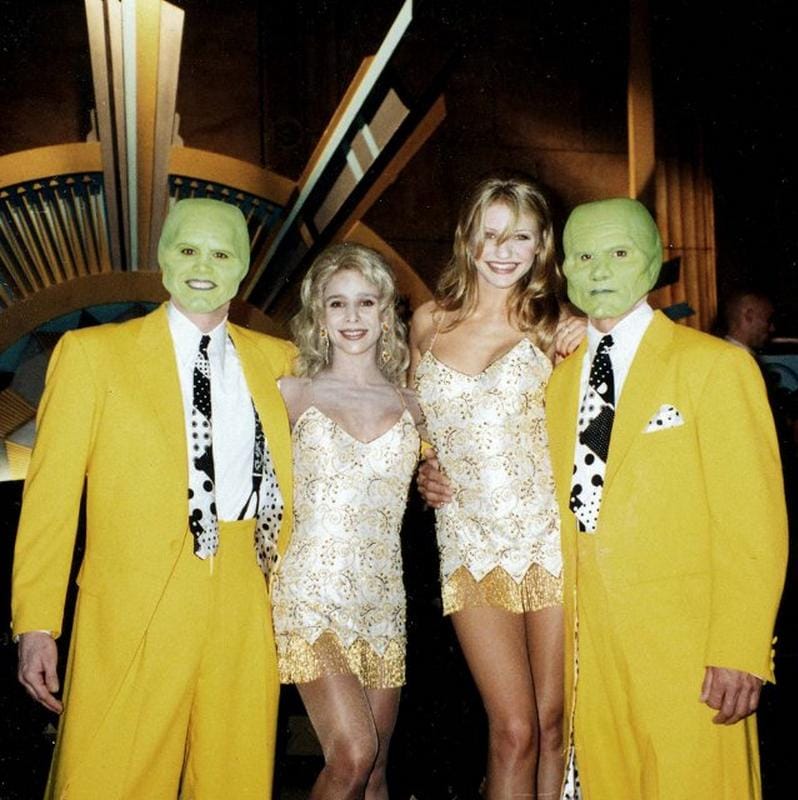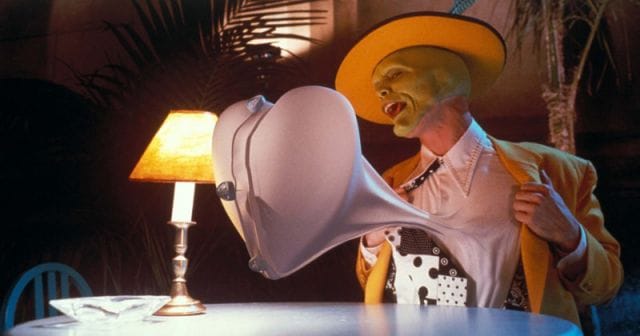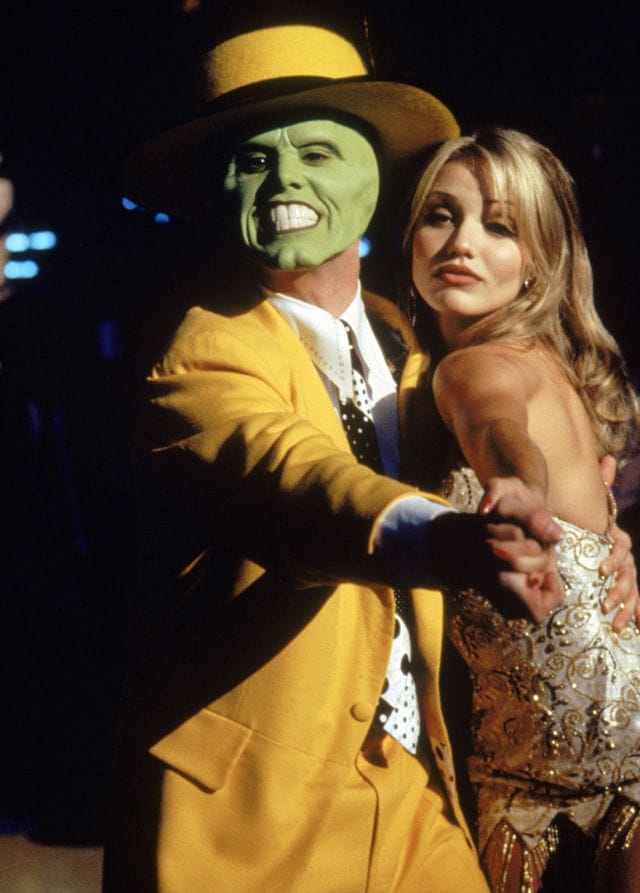Hollywood & Spine Archive: A S-S-Smokin' Read
An overview of the novelization to THE MASK, originally published in February 2021.

Here's how you know I still take something as frivolous as Hollywood & Spine somewhat seriously as a journalist: I don't particularly care for the work of Jim Carrey, but I don't think you'd know it from this. I saw Ace Ventura: Pet Detective and The Mask as a kid and didn't really go nuts over the weird guy making funny faces. I watched the documentary on Man on the Moon with bemused horror, wondering if they'd do a sequel about his work as The Grinch. Fame broke his brain six ways to Sunday, and that's not even counting The Number 23. And yet: objectivity! I had to, after all my goofy friends suggested I do this one. (Originally published 2/25/2021)

The Mask by Steve Perry (based on the screenplay by Mike Werb; story by Michael Fallon and Mark Verheiden) (Bantam, 1994)
The pitch: a hapless nobody turns into a cartoonish prankster with the help of a wooden Norse mask and a Canadian comedian on a Hollywood hot streak.
The author: Steve Perry (not the former Journey frontman) is known in equal measure for his original sci-fi work (like the Matador series) as well as adaptations and tie-ins related to Star Wars (the beloved Shadows of the Empire) Aliens, Conan the Barbarian and Men in Black. He's also an accomplished writer of animated television, penning stories and scripts for The Real Ghostbusters and Batman: The Animated Series.
The lowdown: The Mask is a fascinating blockbuster wedged in the annals of Hollywood history. It was Jim Carrey's second of three commercially successful films released in 1994 (the others being Ace Ventura: Pet Detective and Dumb and Dumber) and arguably the one to make the best, most literal use of his rubber-faced zaniness. It's a by-product of the post-Batman rush to make comic books into films, although the character's origins as a Dark Horse Comics antihero were wildly downplayed in the marketing, at least in part because the film is far less nihilistic than its source material.
Reading The Mask - the winner of a Hollywood & Spine reader poll that I'm not convinced was fair - I was very curious as to how the source material would play out in novelization form. At what point did the focus shift from the comic's Mask - who causes a meek incel to violently murder those who wronged him - to a living Looney Tune with a penchant for swing dancing and one of the silliest catchphrases-turned-memes in Internet history? Did Carrey's charisma make that happen? And how much of these variables would reflect in the book?
I found the answer midway through reading: director Charles Russell claimed in a 2019 interview with The Ringer that he was partially responsible for transforming the story into a madcap vehicle for Carrey (after distributor New Line Cinema initially considered the character a successor to their Nightmare on Elm Street franchise). But surely the script alone wouldn't capture all the nuances of Carrey's improvisations or Industrial Light & Magic's trippy visual effects. That's where Perry's novelization comes in.
Perry was dealing with a slightly longer script - more on that in a bit - but, whether through preference or the materials he was handed, his novelization of The Mask is a little more Dick Tracy-ish. The prose is appealingly florid and colors the human characters in a way the film often doesn't. (When Ipkiss upbraids his jerk of a boss midway through the book, I was struck by phrases like "Dickey's face morphed from outrage to terror faster than a flea's orgasm.")

The narration is often present in a way that would have been more appreciated had there been some character background. In the film, Stanley's love of cartoons is telegraphed well before he puts on The Mask and becomes a 3-D cartoon. It's a bit subtler here, and the uninitiated reader might not understand why the green guy is on his Tex Avery flex all the time.
Another surprise: probably because of the complicated special effects, but The Mask's gags make it to the page virtually unchanged. You'd expect Carrey's improvisational spirit have taken hold, but his transformations were all there in Perry's source material, waiting for an actor to do them justice. (Having The Mask's first line be "S-s-s-nazzzzzy, Stan, baby!" instead of the more familiar "S-s-smokin'!" is jarring - though it appears at least twice later on - and the other signature line, "Somebody stop me," is also absent in the book. It's always fascinating how dialogue plays out in books like these.)

The cutting room floor: At least three scenes were filmed and cut from the final film but end up in the novelization.
The book starts with an alternate prologue where a tribe of Vikings arrives on the land of the future Edge City to dump Loki's enchanted mask far away from their native Norway. There's an extra scene to make Stanley more sympathetic early on, when he's roughed up by a gang outside his apartment. (The thugs steal his watch, explaining both why Stanley can't answer his landlady as to what time it is and setting up his pranks on them during his first night as The Mask.)
Finally, there's a harsh coda to the scene where reporter Peggy Brandt sells Stanley out to the villainous Dorian Tyrel, who then tosses her into the newspaper presses - resulting in a darkly corny gag of the paper's front page reporting her death in red ink, complete with a photo.
Another slight oddity of note: Dorian's boss Niko, a minor character in the film, is only referred to herein as "The Swede," which only adds to the Dick Tracy-ness of it all.
The last word: The Mask is a perfectly fitting tie-in to a very of-its-time picture. Perry's way with words, combined with the well-established source material, make this a fun read - even if you'd sooner read it once you knew what Carrey's performance looked like.
